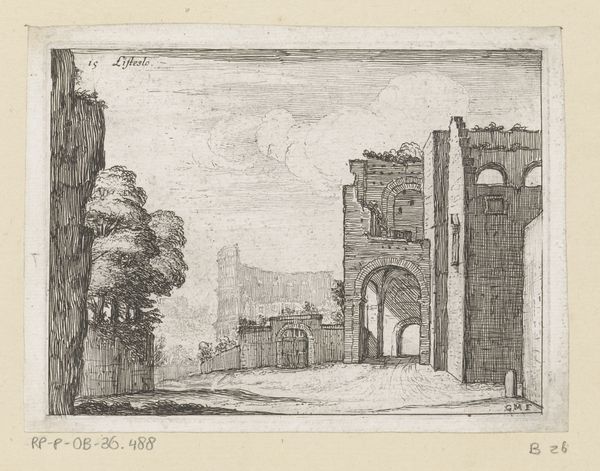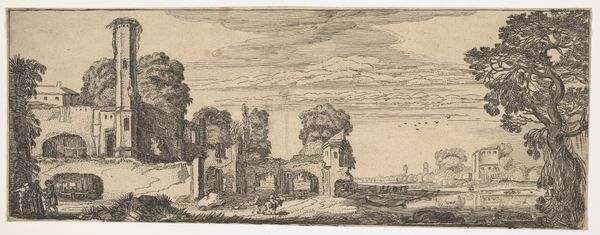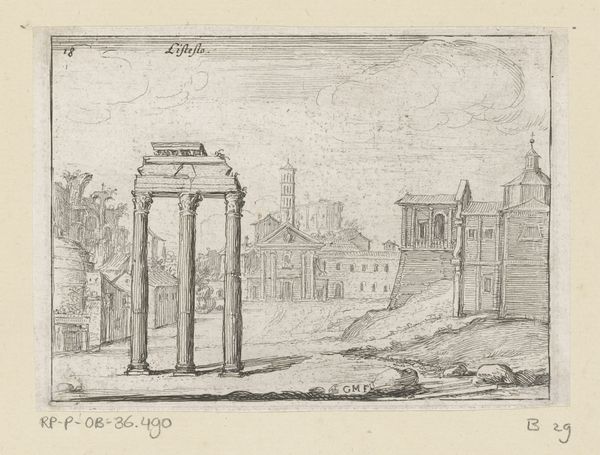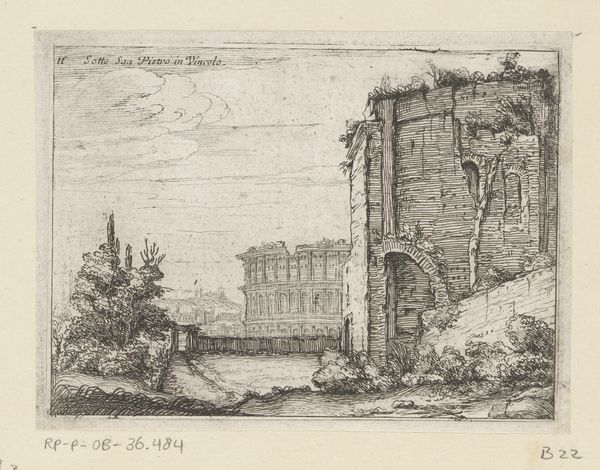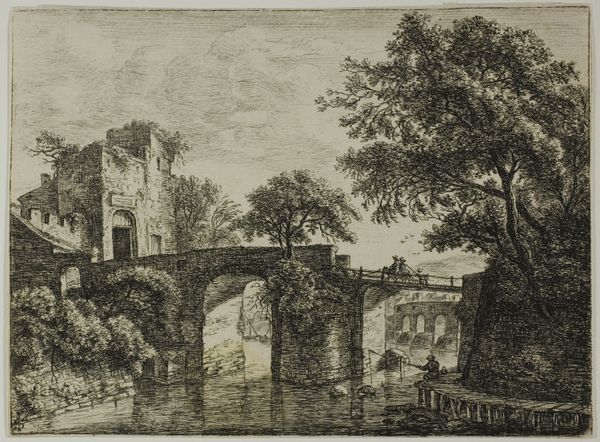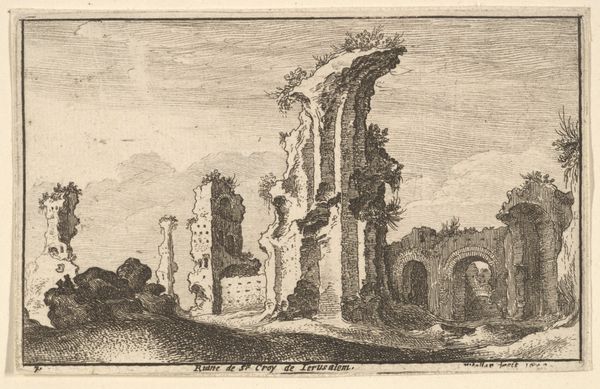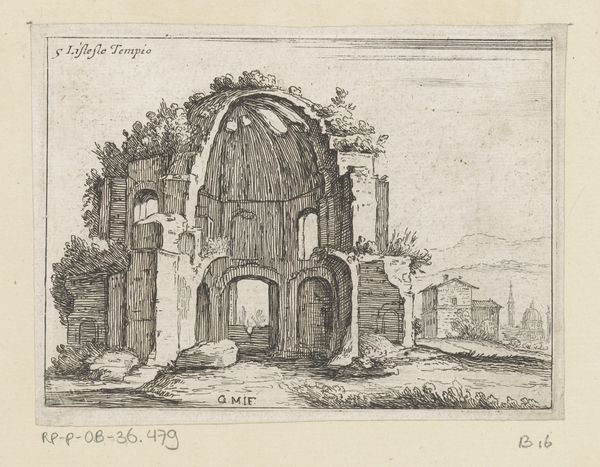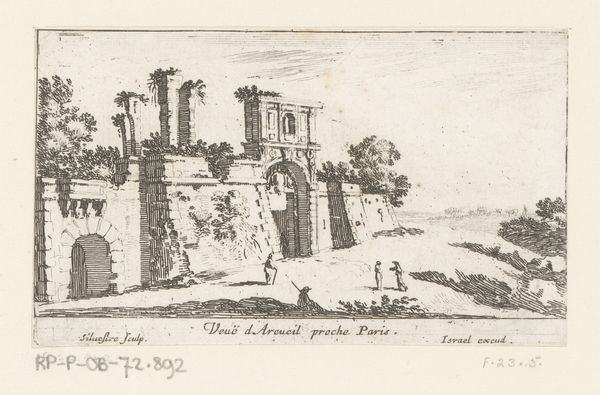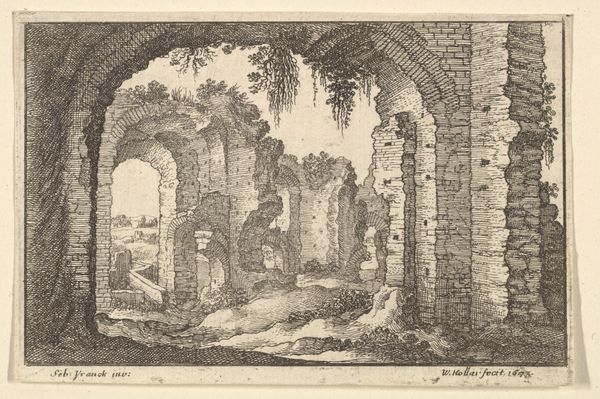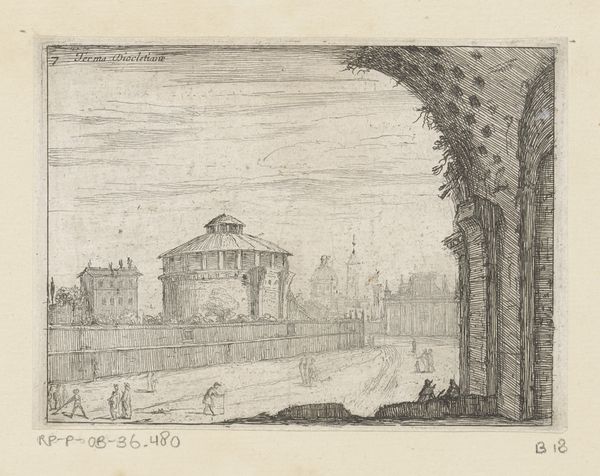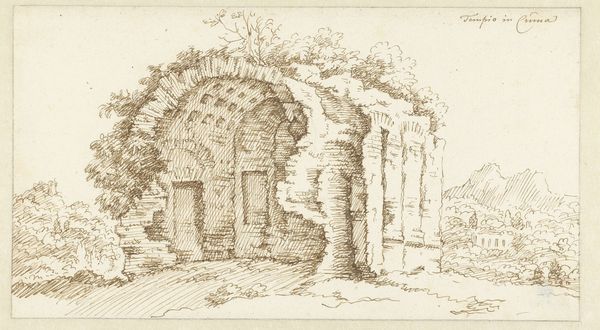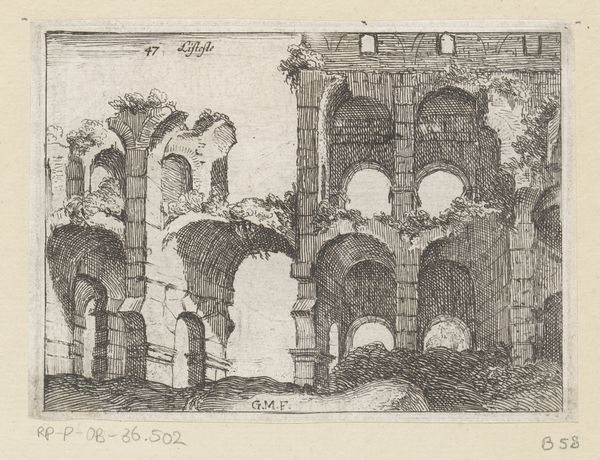
drawing, print, etching, paper, ink
#
drawing
#
aged paper
#
baroque
# print
#
pen sketch
#
etching
#
pencil sketch
#
old engraving style
#
sketch book
#
landscape
#
perspective
#
paper
#
form
#
personal sketchbook
#
ink
#
sketchwork
#
pen-ink sketch
#
line
#
pen work
#
sketchbook drawing
#
cityscape
Dimensions: height 98 mm, width 130 mm
Copyright: Rijks Museum: Open Domain
Editor: Here we have Giovanni Battista Mercati's "Clivus Scauri en de Santi Giovanni e Paolo," created in 1629, using etching on paper. It evokes such a strong sense of time and place. There's this tension between the grandeur of the architecture and the decaying ruins, it’s quite captivating. What do you see in this piece? Curator: What I see is a powerful statement about the ever-changing relationship between power, religion, and the urban landscape of Rome. The crumbling Clivus Scauri, contrasted with the imposing church of Santi Giovanni e Paolo, speaks volumes. Think about Rome in the 17th century: it’s a site of pilgrimage, political maneuvering, and profound social inequalities. Editor: Inequalities, how so? Curator: The Church was a major landowner, controlling resources and exerting influence over the lives of ordinary Romans. These ancient ruins, incorporated into the cityscape, act as a visual reminder of the past, a past which carries all the power imbalances of the present as well. How does Mercati, through this medium, engage with this urban environment and communicate something about its past and present? Editor: So, the image isn't just a pretty picture of Rome; it's also subtly commenting on social power? Curator: Exactly! The etching medium itself can be interpreted. Prints were more accessible than paintings, reaching a wider audience. Was Mercati subtly engaging in a visual dialogue, making commentary about who controlled Rome? Editor: That's fascinating! I had only considered it from a purely aesthetic point of view, now I am seeing that there are layers of socio-political discourse present. Curator: Precisely. Art provides such a multi-layered lens. We must continue to ask what it meant to create, consume, and circulate such images.
Comments
No comments
Be the first to comment and join the conversation on the ultimate creative platform.
